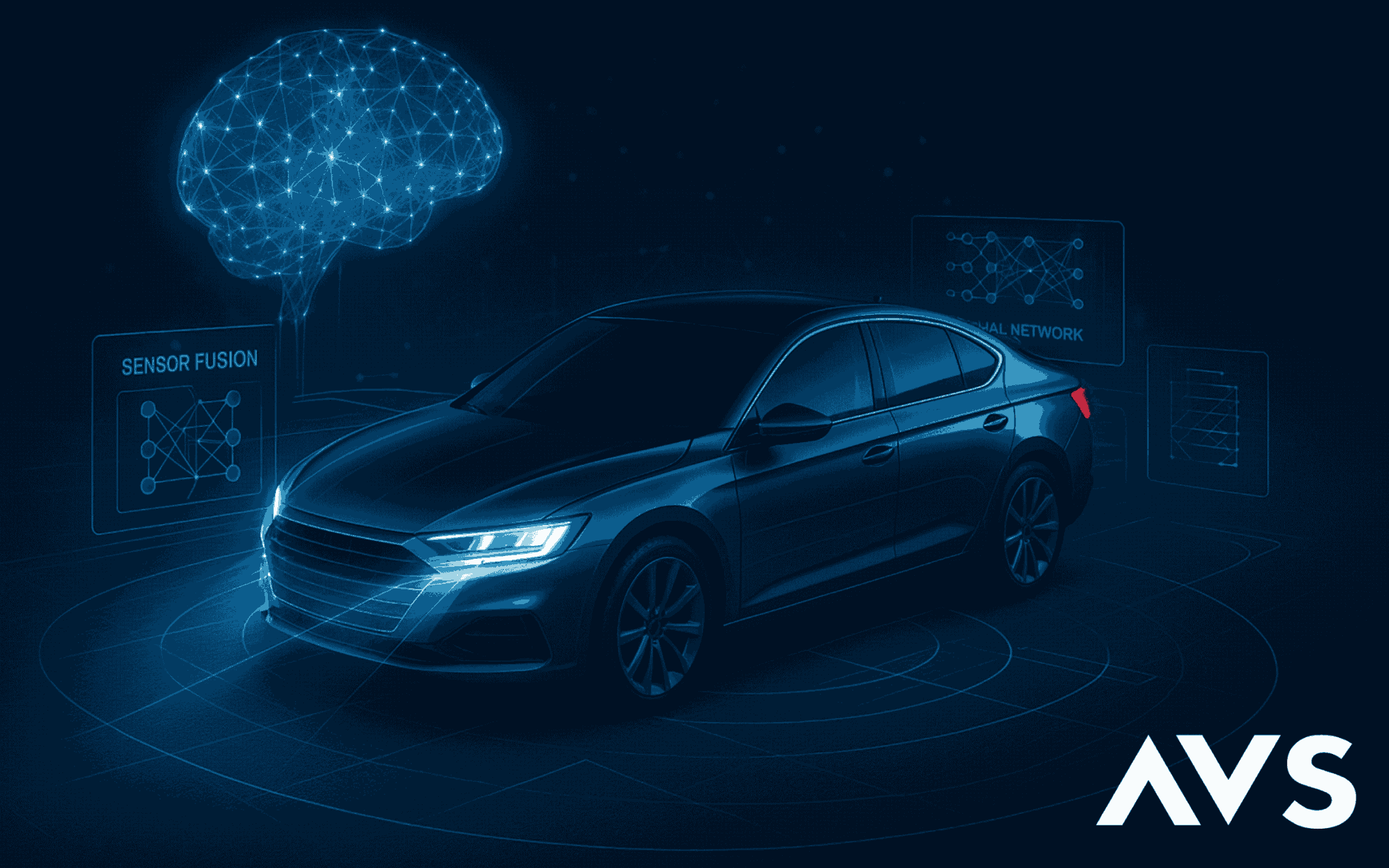Artificial intelligence (AI) has long been considered a future technology for the automotive world. Today, it’s presented as a central building block for autonomous vehicles, offering the ability to understand complex environments, make fast decisions, and continuously learn. But in practice, how mature is in-vehicle AI today? Is it already operational on the road, or is it still limited to labs and demos?
Beyond the marketing hype, the automotive industry is progressing cautiously. Integrating AI into a vehicle isn’t just a technological feat — it’s also a matter of safety, robustness, and validation. This is where simulation plays a vital role.
Concrete use cases, but still limited in scope
AI is already embedded in many production vehicles, although typically for specific, well-defined functions. Examples include:
- Traffic sign and lane marking recognition via computer vision
- Obstacle detection for advanced driver-assistance systems (ADAS)
- Adaptive lane keeping and steering correction
- Driver monitoring (drowsiness, distraction, attention detection)
These features are generally powered by deep learning models, running on high-performance onboard processors — but constrained by cost, power, and thermal limits.
We’re not yet at the point of full AI-driven autonomy. Instead, we see a growing set of targeted micro-applications embedded in a broader system combining rule-based logic, classic algorithms, and human oversight.
Why large-scale AI deployment remains challenging
While the potential of AI is undeniable, it can’t be integrated into a vehicle like any other line of code. Several hurdles remain:
The first is reliability. Embedded systems must behave correctly across thousands of situations, including ones never seen during training. And since deep learning is inherently non-transparent, it’s often impossible to fully explain why the AI made a certain decision. This poses serious concerns in terms of functional safety (ISO 26262) and SOTIF compliance (Safety of the Intended Functionality).
A second challenge is the difficulty of testing AI systems at scale, across diverse conditions (weather, lighting, traffic, sensor interference, etc.).
This is exactly where simulation proves invaluable.
Simulation for learning, testing, and validation
One of the most practical uses of simulation in automotive AI is generating synthetic training datasets. With photorealistic environments such as those created by SCANeR™, engineers can produce millions of annotated images with varied perspectives, lighting, weather, and scenes — ideal for training detection or segmentation models.
But it doesn’t stop there. Once AI models are deployed onboard, they need to be thoroughly validated. Simulation allows for exhaustive testing in critical edge-case scenarios (emergency braking, pedestrian crossing, unexpected animals…), in a safe, repeatable, controlled environment.
Using SCANeR™, these tests can run on real-time HIL platforms, connected to physical ECUs or AI modules, enabling full perception-to-control pipelines to be evaluated.
A hybrid approach: AI plus deterministic logic
Today’s ADAS systems do not rely solely on AI. Instead, we see hybrid architectures where AI complements traditional rule-based logic. For instance, rules may dictate that a vehicle must not cross a solid lane, but AI helps interpret ambiguous objects or situations — like determining whether a shadow at the road edge is a hazard or not.
This combined approach is not only more practical but also easier to validate, as deterministic rules provide a safety baseline, while AI assists with contextual understanding.
It’s also more aligned with certification processes, which still favor explainability and structured validation.
Toward online learning — but simulated first
One future vision for automotive AI is continuous learning: adapting in real time to environment, usage, and even driver behavior. But this raises massive technical and ethical questions: Can we allow a system to modify its own behavior after release? How do we trace and reproduce rare bugs? What if the AI “learns” the wrong thing?
Once again, simulation provides a safe playground. Before enabling real-world online learning, engineers can simulate thousands of learning iterations in diverse scenarios to evaluate system behavior, identify risks, and ensure stability.
A growing reality, under controlled conditions
AI is no longer a futuristic idea in the automotive sector — it’s already here. But it’s progressing step by step, under tight supervision, with a strong focus on safety and validation.
Simulation is at the heart of this transformation. It enables learning, testing, verification, and risk-free experimentation — all essential to bring AI from concept to industrial-grade implementation.


